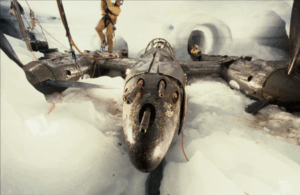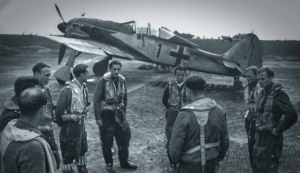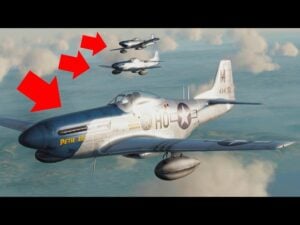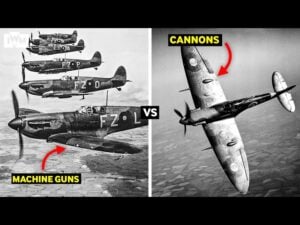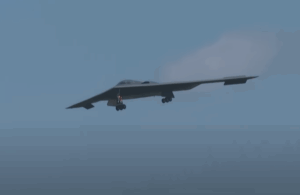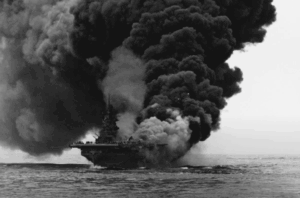The Flying Deathtrap That Shocked The Luftwaffe

YouTube / Dark Skies
On the night of June 5, 1944, the outcome of D-Day seemed to hinge on a strange aircraft — the Airspeed Horsa. British pilots had a grim nickname for it: the “silent coffin.”
High above the tense, pitch-black sky, a loud snap shattered the silence as the tow cables released. From that moment, there was no turning back. Major John Howard gripped his weapon tightly as the Horsas began their quiet, dangerous descent.
Below them lay Rommel’s “asparagus” fields — thousands of wooden poles, spaced 15 to 40 feet apart, turning open fields into deadly traps. One wrong move could mean disaster. For Howard and his men, the Horsas would either be the perfect stealth weapon… or they’d be torn to pieces.
Britain’s Best WWII Glider
The Airspeed Horsa slipped silently through the skies during WWII. It gave the Allies the unmatched stealth and precision they needed during vital missions.
Britain’s best WWII glider was purposely built to deliver troops and equipment silently into the heart of enemy territory. Developed in record time, the Horsa went from the drawing board to the air in ten months and was incredibly unique. Because of material shortages and the urgent need for mass production, it was mainly made from wood with 30 separate components.
Combat Use
The Horsa’s first large-scale use was in Operation Husky, in the Allied invasion of Sicily. The aircraft was also the ideal choice for Operation Deadstick, for one simple reason- stealth. The glider didn’t have an engine, making its descent completely silent. It featured a tow hitch at the front, relying on bomber planes such as the Handley Page Halifax to reach the sky. Once the cable was released from the cockpit at the drop zone, it glided silently toward the landing zone with pilots relying on skill to bring it down to a precise point, often in pitch dark.
As soon as it lands on the ground, its massive reinforced doors allow troops and equipment to swiftly exit, excellent for quick and immediate assaults. It’s designed to carry up to 30 fully equipped soldiers, or a combination of vehicles, guns, and supplies.
The Horsa also had an impressive 88-foot wingspan and lightweight frame, and its high wing design offered great lift and stability during flight. Its semi-monocoque-shaped fuselage also ensured structural strength without adding excessive weight. This all-wooden model isn’t for the faint-hearted. Even Britain gave it an eerie nickname- the silent coffin.
Vital Mission
Operation Deadstick needed precision, timing, and discipline. The team picked for the vital task of capturing bridges over Caen Canal and Orne River was Major John Howard’s D Company, a unit of highly trained soldiers. Six airspeed Horsa gliders, carrying 28 men each, would make silent landings at their destination. The Horsa pilots underwent rigorous preparation.
On June 5, 1944, six Airspeed Horsa gliders left Dorset, towed into the air by Halifax bombers. Shortly past midnight on June 6, one by one, the gliders detached from their tow planes, and from then on, the pilots were flying blind, further adding to the dangers were anti-aircraft obstacles, thick wooden poles planted across likely landing zones, spaced 15 to 40 ft. apart, intending to rip or spear incoming gliders. Some landed safely, and others crashed into obstacles like ponds.
Nonetheless, British troops immediately rushed out, charging toward their objectives, and catching defenders off guard. This prevented them from detonating explosives meant to destroy tactically crucial bridges. By 12:30 am, the bridges were firmly in Allied hands. At around 3:00 am, the sky was filled with parachutes as hundreds of troops from the 7th Parachute Battalion descended. They arrived just in time, as the Germans were already mounting a fierce counteroffensive.
At 1:00 pm after hours of relentless fighting, the sound of bagpipes filled the air. Piper Bill Million led Lord Lovat’s commandos toward Pegasus Bridge. As Lovat’s men marched in, the battle for the bridge was won.
Victory, Finally
After Operation Deadstick succeeded, the captured bridges became crucial for the Allies. Countless soldiers and vehicles used this bridge to push deeper into France, turning the D-Day landings into a full-scale invasion. Air Chief Marshal Trafford Leigh-Mallory termed the performance of the glider pilots as “one of the most outstanding flying achievements of the war.”
To honor the brave men who fought during Operation Deadstick, both bridges received new names. The Caen Canal Bridge became “Pegasus Bridge” after the winged horse symbol of the 6th Airborne Division. Meanwhile, the River Orne Bridge was called “Horsa Bridge,” remembering the gliders that brought the troops to their target.














